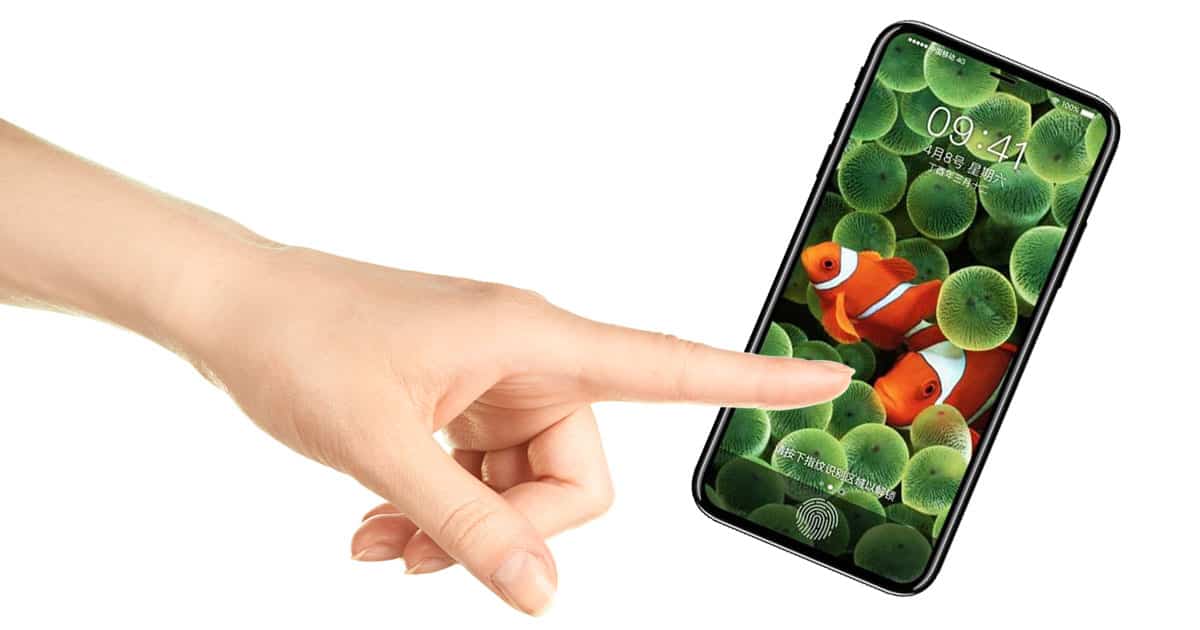Apple has only a few weeks left to fix the Touch ID issues plaguing the iPhone 8. Orders for the fingerprint sensor chips have to be placed by August, according to KeyBanc Capital Markets analyst Andy Hargreaves, or Apple must choose between a delayed launch or removing Touch ID from the phone.

Hargreaves says Apple hasn’t been able to resolve issues with embedding Touch ID sensors in the iPhone 8’s OLED display and it’s coming down to decision time. Apple needs to order the fingerprint sensor chips early enough so manufacturing can ramp up. He told investors,
We believe it would typically take 12 weeks from placement of fingerprint IC orders to full volume production of iPhones. Consequently, if Apple is able to solve its fingerprint problems and place orders for fingerprint ICs before August, it would likely be able to reach volume production in late October or early November.
If not, “This increases the potential that the new OLED iPhone could be delayed, or ship without a fingerprint sensor, either of which could increase risk to unit sales and mix for the cycle,” he said.
The iPhone 8 is still an unconfirmed product, but so many leaks have surfaced that it may as well be announced now. Reports say the new iPhone model is slightly larger than the iPhone 7 but with a screen size similar to the iPhone 7 Plus, its OLED screen runs nearly edge to edge and takes up the space where the Home button usually sits. The physical Home button will be replaced with a virtual on screen button, plus the front-facing camera will include 3D scanning capabilities which may be used for facial recognition.
The lack of a physical Home button means Touch ID needs a new place to live. Reports say Apple is working on embedding the sensors in the display surface, and also potentially placing a physical sensor on the back of the phone.
The iPhone 8 Touch ID Dilemma
A shipping delay is a better choice than ditching the fingerprint sensor for the iPhone 8, but the latter is still a possibility. “This option appears increasingly likely as time passes, but is far from ideal,” Hargreaves said.
The big problems with moving to facial recognition are convenience and security. Requiring line of sight with our faces for the front-facing camera means there will be times—likely daily—where facial recognition doesn’t work because user’s phones will be at the wrong angle.
For security, Hargreaves doesn’t see facial recognition as a reliable option for Apple Pay authentication. He said,
Further, we do not believe facial recognition would be initially qualified as an acceptable verification method for Apple Pay. While Apple could achieve this over time, the likelihood for an initial lack of Apple Pay could adversely affect demand.
Assuming his sources are right and Apple is scrambling to make Touch ID in the display glass work, the company is facing a dilemma: delay the iPhone 8 until embedded Touch ID is reliable, or pull the feature and Apple Pay support along with it.
Apple typically holds a September media event to unveil the new iPhone models. This year, the iPhone 8 is expected to make its official first appearance, along with the iPhone 7s and iPhone 7s Plus.
iPhone pre-orders usually start a few days after the media event, and ship a week later. If Apple delays the iPhone 8 ship date the 7s and 7s Plus will still most likely ship on the company’s usual schedule.
Shipping an iPhone without Apple Pay support sounds like a really bad idea, so if there is a sensor issue Apple is probably leaning more towards a delay. That seems like a reasonable path for Apple to take, assuming we don’t see a replay of the AirPods where it ships months late and is painfully frustrating to get for months after that.
[Thanks to Barrons for the heads up]
TouchID is an essential feature for the Apple Ecosystem. Even if a first gen Facial Recognition system is used, it has to have TouchID as a backup and for systems that are not ready to access FR. It will not ship without it.